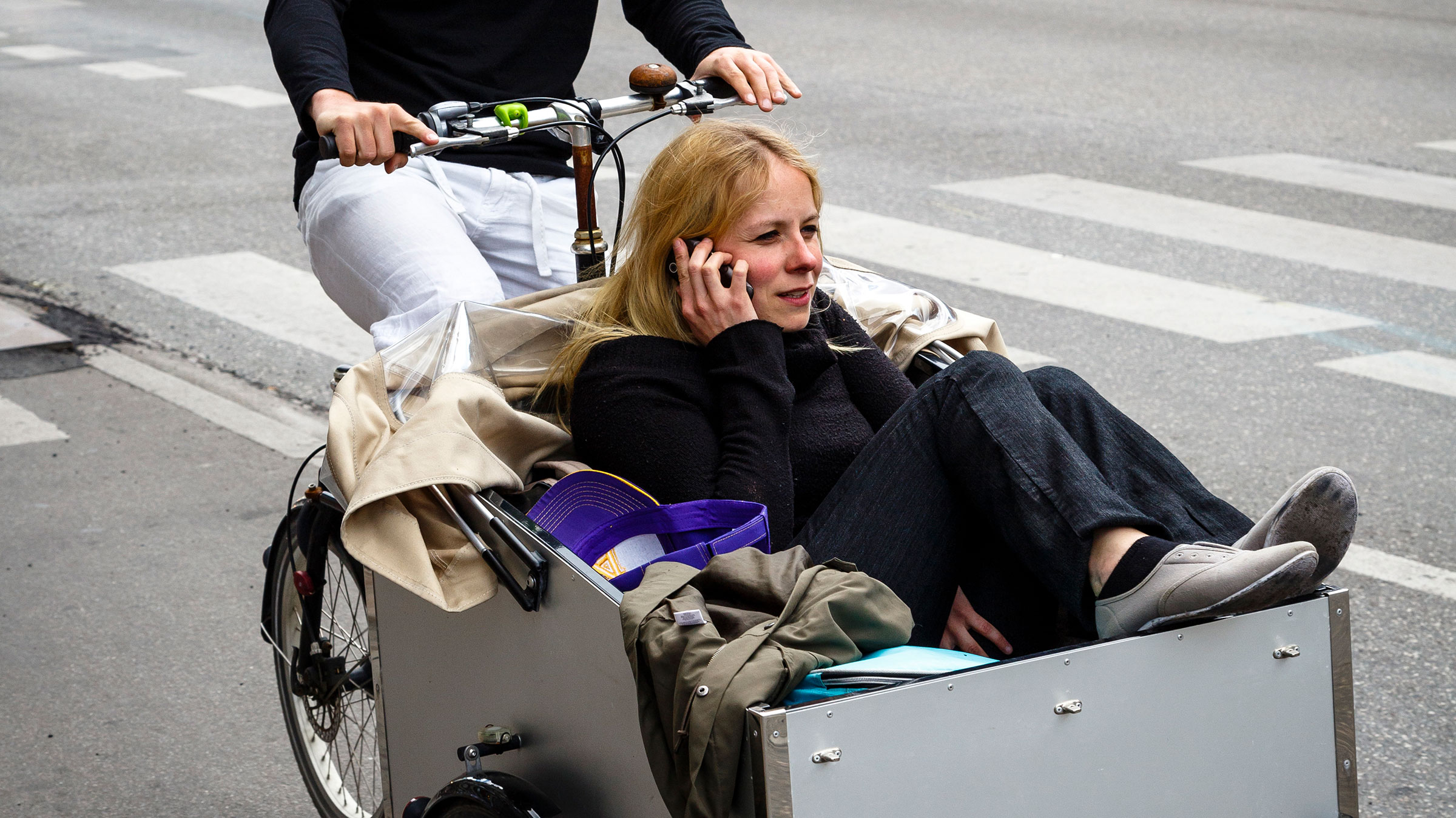Climate impact
Danes living in urban areas cycle 2.8 km per day on an average – one of the highest numbers in the world. Cycling replaces a mix of trips with car, public transport and walking.
As the Danish level is very high and circumstances in other areas may be more challenging, we assume that in other countries cycling can grow by a maximum of 30% by 2030. With this constraint scaling up the solution to urban areas in other countries would reduce emissions by 23 Mt in 2025 and 37 Mt in 2030. We assume that cycling replaces mostly travel by bus and car and, to a lesser extent, walking.

Success factors
Denmark has one of the highest shares of cycling in the world. Reaching comparable levels requires a combination of behavioural change, infrastructure investment and determined policies to promote cycling.
In Denmark, policies have focused on urban planning, transportation policies that favour cycling and bike parking facilities. A national cycling strategy coupled with a DKK 1 billion support scheme for expanding the cycling infrastructure in municipalities and designated cycling towns has focused on connecting cycling with public transport systems, promoting cycling opportunities in relation to both the workplace and leisure purposes, and safe cycling for school children. The strategy has also enabled others to initiate pro-cycling actions of their own, in particular municipalities and public transport authorities.
“Danes living in cities
cycle an average of
2.8 km every day.”
Costs
Estimating costs for cycling is difficult as the solution relies largely on behavioural change. Based on the costs from building and maintaining bicycle paths as well as reduced fuel costs, we estimate promoting cycling to have a negative cost of about –0.02 $/km.
This would result in an estimated abatement cost of –14 $/tCO2 in 2025 and –42 $/tCO2 in 2030. The net abatement cost would then be –$310 million in 2025 and –$1,550 million in 2030.

Co-benefits
Cycling provides multiple significant co-benefits, including
- cutting harmful air pollution
- reducing congestion
- improving health
- cutting noise
- freeing up urban space for other uses
Barriers and drivers
Cycling may be limited by the weather, such as harsh winters in the north and hot and humid climate in the tropics. However, cases from cities like Oulu in northern Finland show that large cycling shares can be achieved even in challenging climates.
Challenging topography may also discourage cycling in cities that are not situated in a flat area. Some of these limitations can be alleviated with electric bikes.
Restructuring cities with a legacy of car-dominated infrastructure takes time and resources. However, compared with investments in roads for cars and tracks for public transport, bicycle lanes are considerably cheaper.
In many areas cycling can have negative associations related to social class or gender, for example. Public campaigns may be needed to reframe cycling as an aspirational mode of transportation.

RELATED SOLUTIONS